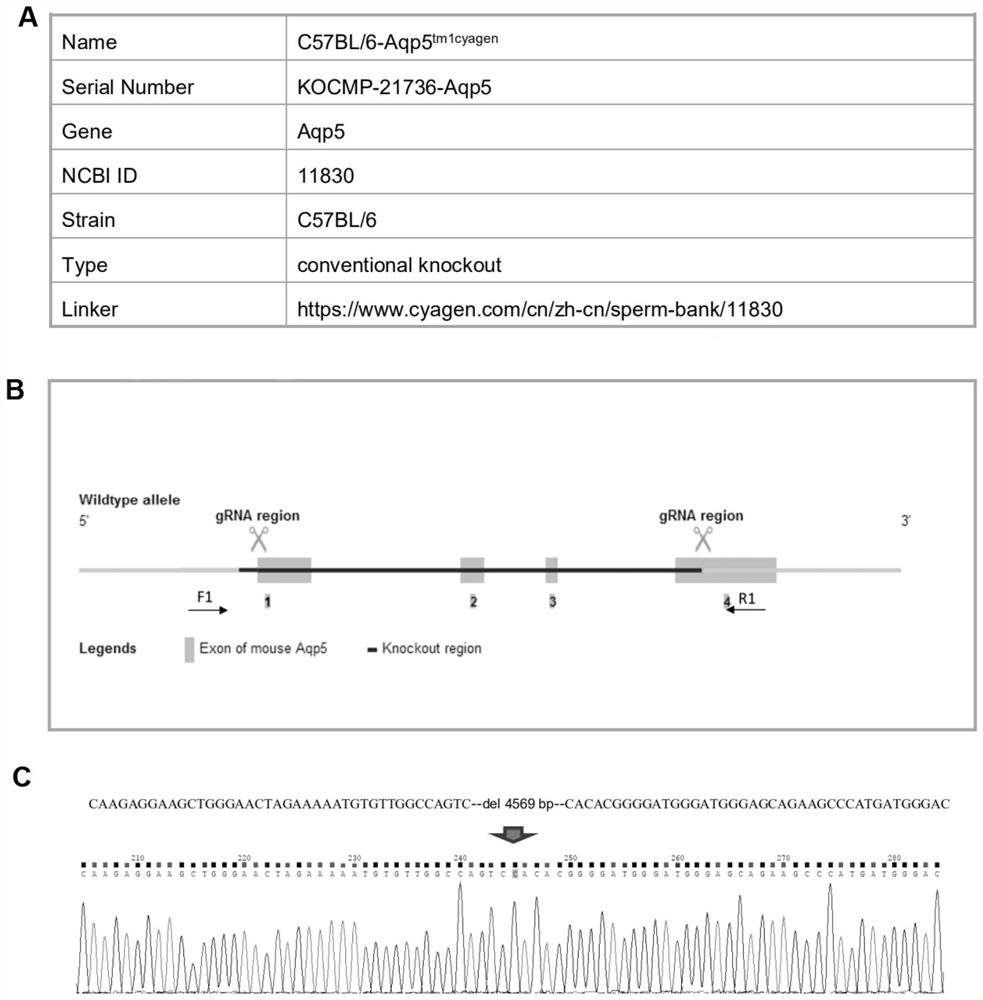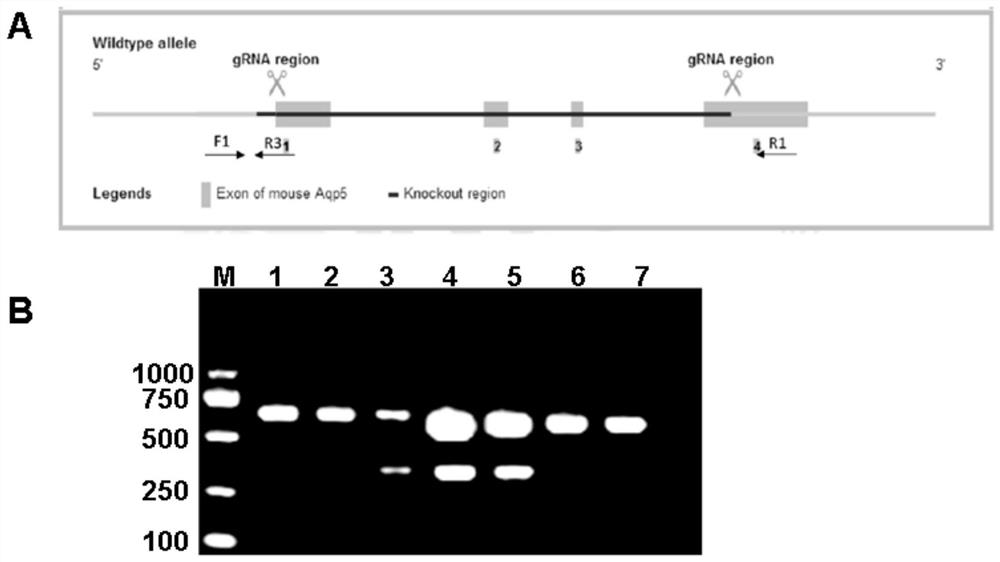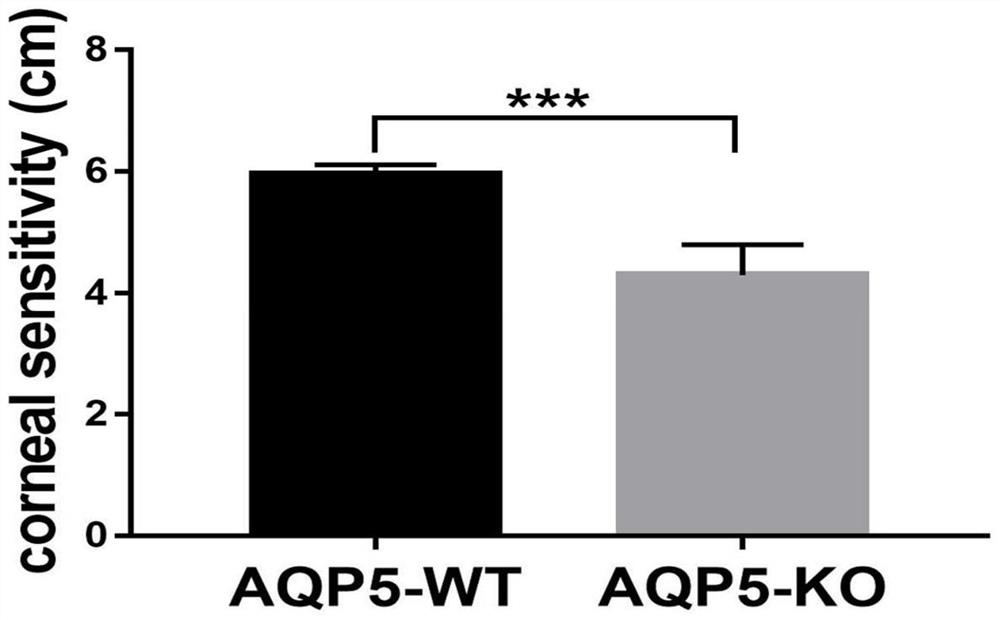Mouse neurotrophic keratitis animal model and application thereof
A mouse model and neurotrophic technology, which is applied in animal/human peptides, compound screening/testing, biochemical equipment and methods, etc., can solve problems such as long operation time, varying degrees of injury, and poor model consistency, and achieve reliable results. Highly repeatable and model-stable effects
- Summary
- Abstract
- Description
- Claims
- Application Information
AI Technical Summary
Problems solved by technology
Method used
Image
Examples
Embodiment 1
[0028] Example 1: Construction of AQP5-KO mouse NK animal model
[0029] 1. Construction and identification of AQP5-KO mice
[0030] AQP5 (NCBI ID: 11830) is located on chromosome 15 of the mouse. For the information of AQP5-KO mice and the knockout region, see figure 1 A, B, AQP5-KO mice were obtained by knocking out the chr15:99589876-99594444 gene fragment with a length of 4569 bp by using CRISPR / Cas9 technology and applying high-throughput electroporation to fertilized eggs.
[0031] figure 1 C is the sequencing identification result of the AQP5-KO mouse, compared with the wild-type sequence, it can be seen that a total of 4569bp sequence is missing, indicating that the model mouse was successfully established.
[0032] In subsequent routine feeding, PCR amplification was used to detect the knockout effect of AQP5-KO mice.
[0033] PCR amplification target fragment: reaction conditions and reaction system:
[0034] (1) PCR reaction conditions: 94°C for 3min; 94°C for 3...
PUM
 Login to View More
Login to View More Abstract
Description
Claims
Application Information
 Login to View More
Login to View More - R&D
- Intellectual Property
- Life Sciences
- Materials
- Tech Scout
- Unparalleled Data Quality
- Higher Quality Content
- 60% Fewer Hallucinations
Browse by: Latest US Patents, China's latest patents, Technical Efficacy Thesaurus, Application Domain, Technology Topic, Popular Technical Reports.
© 2025 PatSnap. All rights reserved.Legal|Privacy policy|Modern Slavery Act Transparency Statement|Sitemap|About US| Contact US: help@patsnap.com



